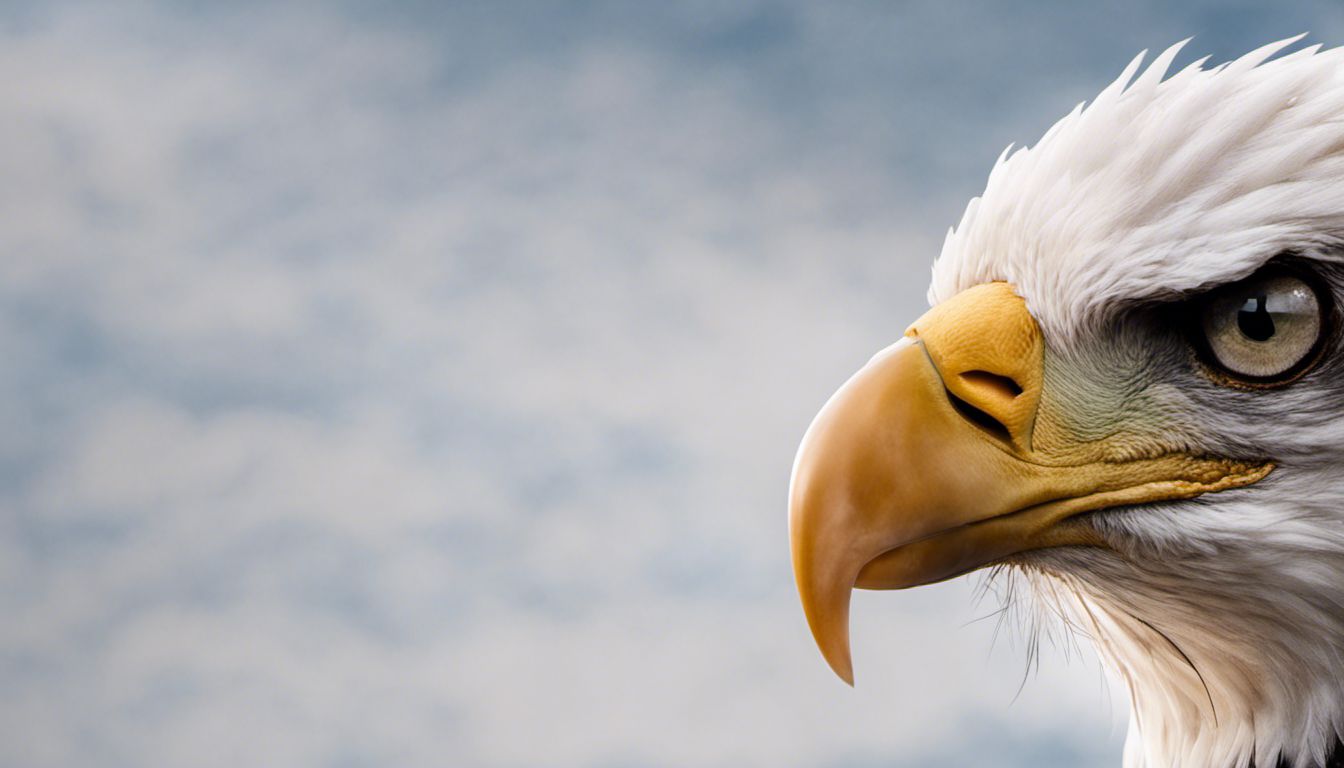Bald eagles typically begin to develop their iconic white head and tail feathers when they reach 4 to 5 years of age, marking the transition from juvenile to adult plumage. This change signifies their maturity and readiness for breeding.
Key takeaways about the maturation of bald eagles:
- Bald eagles undergo a process of maturation that includes several plumage changes before acquiring their distinctive white head.
- The transition from juvenile to adult plumage is gradual and occurs over several years, not overnight.
- Full adult plumage, which includes the white head and tail, generally signifies that the bald eagle is of breeding age.
- The white head of a bald eagle is not just visually striking, it’s key to their identity and has become a national symbol in the United States.
The Maturation of Bald Eagles: Journey to the Iconic White Head

Bald eagles experience a remarkable transformation in their appearance as they grow older. This transformation is most notable in the development of their white head, which is associated with maturation and becomes a symbol of their species.
The journey toward adult plumage includes several stages:
- At birth, bald eagle chicks are covered in fluffy gray down.
- After about 3-4 weeks, the chick’s down is replaced with a darker, juvenile plumage.
- Throughout the first year, their plumage is mostly dark brown.
- During the second year, bald eagles begin to show mottling with white feathers appearing on the body and wings, while the beak starts changing from black to yellow.
- As they enter their third and fourth years, their head and tail feathers become lighter with each passing year.
- Finally, by age 4 to 5, most bald eagles have fully achieved their white head and tail feathers, signifying their maturity.
This white head development is crucial as it signals the eagle’s readiness for breeding and full entry into adulthood.
Understanding Bald Eagle Plumage: From Juvenile to Adult

The different plumage stages of bald eagles are fascinating, each corresponding to key age milestones that help in identifying the age of the bird. These stages are characterized by notable shifts in coloration, and interestingly, both male and female bald eagles share similarities in plumage throughout their development.
Let’s take a closer look at the changes:
- Juvenile Bald Eagles (up to 1 1/2 years old): Display mostly brown feathers with some lighter mottling. Their beaks and eyes are dark.
- At 2 1/2 years old, there’s an increase in white mottling on the belly and under the wings, and more yellow begins to show in the beak.
- By 3 1/2 years, the mottling becomes even more apparent, and the head and tail feathers start showing a mix of brown and white. The beak continues to yellow with a lessening of black at the tip.
- Finally, between 4 1/2 to 5 years old, bald eagles approach their iconic adult plumage with a fully white head and tail and a predominantly yellow beak, confirming their adult status.
It’s important to note that throughout these stages of development, eagle age identification relies predominantly on these plumage changes since size and structure don’t differ significantly between juveniles and adults or between genders.
The Significance of the Bald Eagle’s White Head

The white head of the bald eagle is more than just a striking feature; it holds both cultural and biological importance. Culturally, the bald eagle’s white head is a powerful symbol of strength and freedom, particularly in the United States where it serves as the national bird.
Biologically, the white head signifies a bald eagle’s adulthood and readiness for mating. The prolonged process of up to five years before the head turns white ensures the eagle has reached social and physical maturity, necessary not just for breeding but also for the complex behaviors associated with bald eagle courtship, territory establishment, and the raising of young.
Here’s why the development of the white head is essential:
- The bald eagle’s white head stands out against its dark body and wings, providing a clear visual indicator of age and maturity to other eagles.
- It takes five years for the head to turn white because bald eagles undergo a slow maturation process, which also corresponds to the development of their skills for survival and reproduction.
- This distinct feature also helps bald eagles in establishing and defending territory, a critical part of their breeding readiness.
The white head is not only a biological marker but also a symbol rich in bald eagle symbolism, representing longevity, wisdom, and power in various cultures, further emphasizing its significance.

